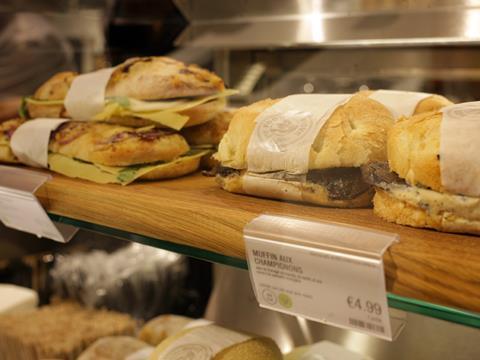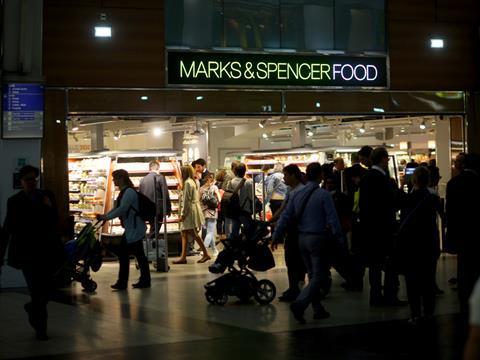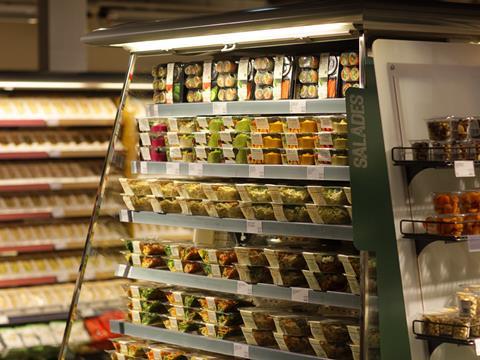
The international retailer Marks & Spencer has earned a reputation for proactivity in its sustainability policies. In 2007 the business launched a 100-point sustainability plan, dubbed ‘Plan A’, which over the ensuing decade has seen simplification of the types of plastic used in its private label packaging, removed microbeads from its products, introduced a charge on plastic carrier bags, and optimised packaging – resulting in a reduction in packaging materials in 140 snacking products. Its latest iteration, Plan A 2025, steps up the ambitions, including the One Polymer Road Map and target that 100 per cent of its packaging is widely recycled. Tim Sykes spoke to M&S’s Kevin Vyse (Senior Technologist, Food Packaging, and Circular Economy Lead) about the company’s approach to sustainability in packaging and the implications of the latest goals.
Tim Sykes:
How does M&S assess and manage the trade-offs in environmental performance, such as between overall product footprints (including food waste) and the hot question of packaging waste?
Kevin Vyse:
We look holistically at everything we do – across our operation, our supply chains and of course when our customers come to remove packaging and use our products. This includes designing our products and packaging that underpin the creation of a circular economy in the markets we serve.
.jpg)
TS:
Given the current heat on plastics in general, how does M&S perceive and respond to public pressure that might not be informed by a rounded understanding of the role of packaging and unintended consequences?
KV:
We use packaging smartly to ensure products stay fresh for longer. For example, 1gm piece of film can double the life of a cucumber, apples and bananas and 5gms of plastic can ensure that a piece of meat greatly improves the quality of the product. By keeping food fresher for longer, customers throw out less food.
However, we recognise the enormous challenges, that the current approach to plastic use globally is causing and see that we have an important part to play in preventing the leakage of plastic into the environment. We’ve already taken action in a number of areas – from introducing the 5p carrier bag charge, and removing microbeads from our products significantly ahead of legislation, to reducing the amount of packaging we use. For example, we have saved 75 tonnes of packaging annually by redesigning the packaging for our 140 snacking products and will continue to innovate to optimise our packaging design.
We know there is more to do – that’s why we’ve set a bold target to make all our packaging ‘widely recyclable’ by 2022, as part of our zero-waste ambition. We’re working with policy makers, fellow retailers, manufacturers, local authorities, the recycling and plastics industry, WRAP and the Ellen MacArthur Foundation to develop scalable solutions to prevent the leakage of plastics into the environment.
TS:
Is there merit in considering the proposition of replacing plastics wherever this is viable from a holistic point of view?
KV:
We are always looking into new ways to package products but our focus is on making the plastic as light as possible whilst improving overall collection and recycling.

Plan A 2025 sets a bold new goal to be a zero waste business across all that we do – our operations, our supply chains and of course when our customers come to remove packaging and use our products. This includes designing our products and packaging to underpin the creation of a circular economy in the markets we serve.
By 2022 all M&S product packaging in the UK that could end up with our customers will be not only ‘recyclable’, but ‘widely recycled’. To achieve this, we will actively collaborate with others to bring about changes in local government recycling policy. By 2022, we will also assess the feasibility of making all M&S plastic packaging from one polymer group, which will help maximise the use of recycled content.
TS:
We were both present at the European Bioplastics conference this year, where advantages of bioplastics as a sustainable packaging substrate were discussed in much depth. What do you consider the roadblocks?
KV:
Bioplastics are traceable and allow retailers to provide greater visibility of the supply chain. With cheap fossil fuels in the marketplace, scalability has been a challenge. However, we’re seeing more organisations taking an interest in the future of biopolymers and this will continue to increase.

TS:
The objective of simplifying down to the use of a single polymer is perhaps the most eye-catching aspect of the M&S packaging material strategy. Given your diverse range of products and associated packaging applications, it must be a challenge to find a single polymer that efficiently delivers all of the necessary properties across rigid and flexible formats. You have previously remarked that the selected plastic is likely to be a new structure. What are the prerequisites of this polymer?
KV:
We’ve already worked hard to reduce the number of plastics we use in our food business – and now just use three. Our ambition is to look at the feasibility of making all M&S own-brand plastic packaging from one polymer group, which will help maximise the use of recycled content.
The polymer needs to be able to be blow moulded, extruded or formed. PET already plays a part in our packaging inventory and so it’s a close contender for the role as a single. However, there are some exciting developments in the pipeline that may perform better than PET, PEF (polyethylene-furanoate) being one of them. We know that by 2022 there’ll be two pilot plants running PEF. We’re looking at all these options too.
TS:
Is there a role for other stakeholders to play in the specification of the ‘super-polymer’? Do you see an opportunity to multiply the impact of simplification with cross-industry implementation?
KV:
Absolutely. In fact, we are already collaborating around R&D with a number of groups. This project is a great example of how collaboration is vital for the circular economy.




















